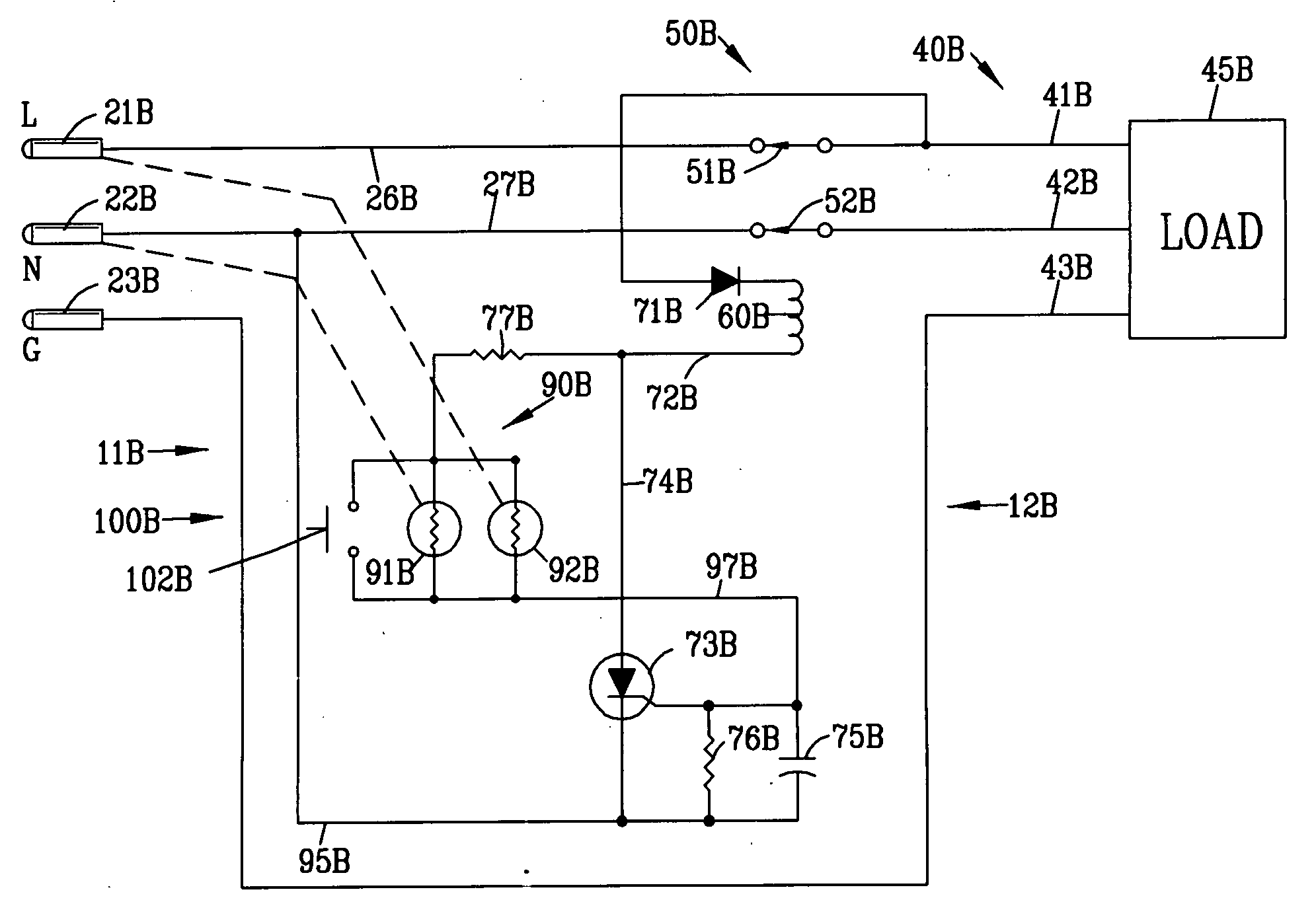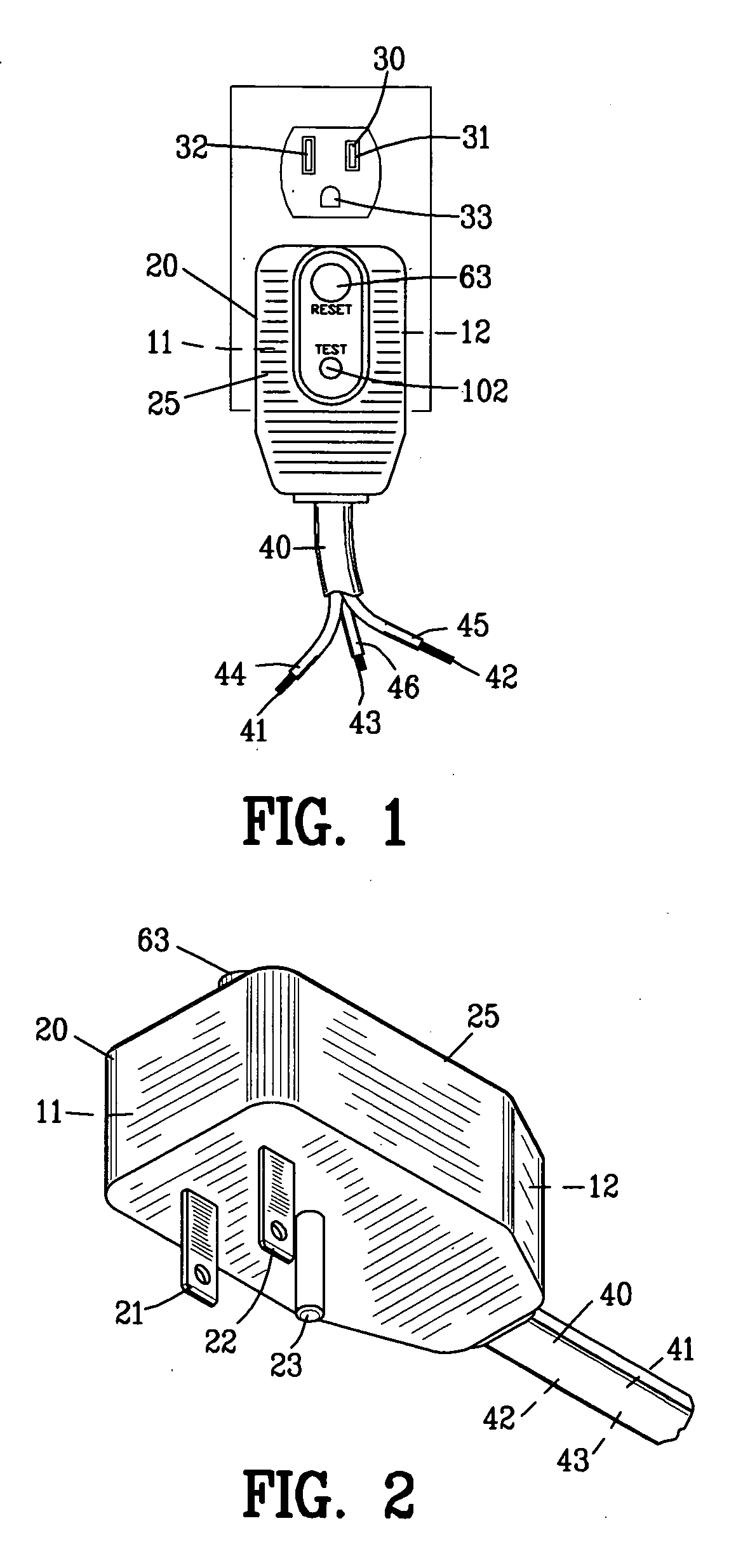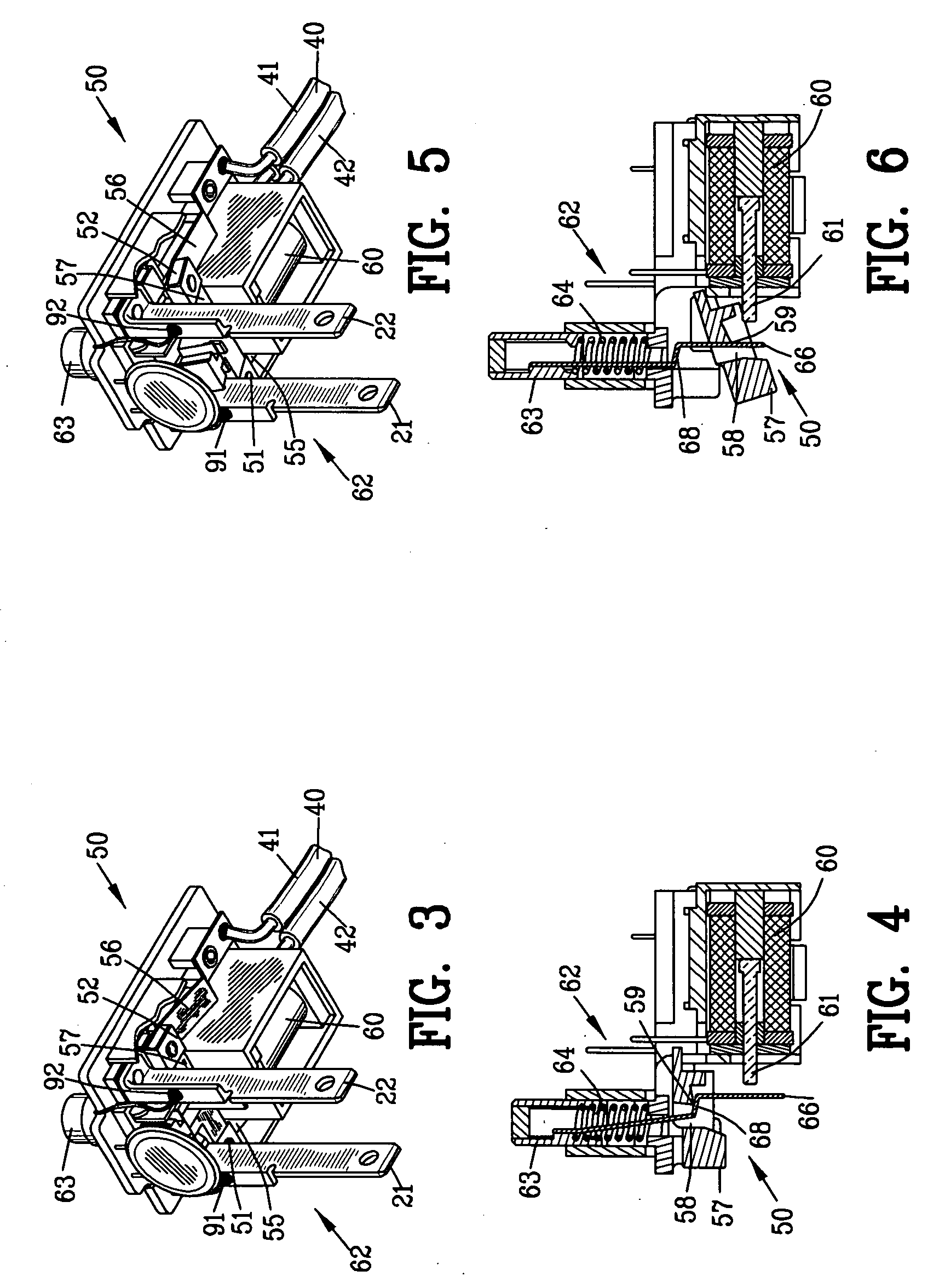Over heating detection and interrupter circuit
a detection circuit and over heating technology, applied in the electrical field, can solve the problems of deterioration between one of the resilient slot connectors and the inserted electrical blade, raising the electrical resistance of the electrical contact therebetween, and affecting the operation of the circui
- Summary
- Abstract
- Description
- Claims
- Application Information
AI Technical Summary
Benefits of technology
Problems solved by technology
Method used
Image
Examples
first embodiment
[0068]FIG. 7 is a circuit diagram of the over heating detection circuit 11A and an interrupter circuit 12A. A disconnect switch 50A includes switches 51A and 52A operating in unison. The first and second electrical blades 21A and 22A of the electrical plug 20 shown in FIG. 2 are connected by conductors 26A and 27A to a first side of the switches 51A and 52A. Conductors 41A and 42A of the wire assembly 40A interconnect a second side of switches 51A and 52A to a load 45A. The disconnect switch 50A is shown in the closed or reset condition. The ground lug 23A is connected directly to a ground conductor 43A of the wire assembly 40A bypassing the disconnect switch 50A.
[0069]A diode 71A is connected to the conductor 26A to provide power for the over heating detection circuit 11A and the interruption circuit 12A. The diode 71A provides power through the solenoid coil 60A of the disconnect switch 50A to a conductor 72A. The conductor 72A is connected to a switch shown as a thyristor 73A thr...
second embodiment
[0077]FIG. 8 is a circuit diagram of the over heating detection circuit 11B and the interrupter circuit 12B. Similar components are labeled with similar reference numerals with the sequential alphabetical character B. A disconnect switch 50B includes switches 51B and 52B operating in unison.
[0078]The first and second electrical blades 21B and 22B are connected by conductors 26B and 27B to a first side of the switches 5B and 52B. Conductors 41B and 42B of the wire assembly 40B interconnect a second side of switches 5B and 52B to a load 45B. The disconnect switch 50B is shown in the closed or reset condition. The ground lug 23B is connected directly to a ground conductor 43B of the wire assembly 40B bypassing the disconnect switch 50B.
[0079]In this second embodiment, the diode 71B is connected to conductor 41B to provide power for the over heating detection circuit 11B and the interruption circuit 12B.
[0080]Under normal operating temperature conditions, the resistance of the first and...
third embodiment
[0082]FIG. 9 is a circuit diagram of the over heating detection circuit 11C and the interrupter circuit 12C. Similar components are labeled with similar reference numerals with the sequential alphabetical character C. A primary circuit 70C is located on the left side of the disconnect switch 50C whereas a secondary circuit 80C is located on the right side of the disconnect switch 50C. The disconnect switch 50C comprises a first, a second and a third switch 51C-53C operating in unison.
[0083]A diode 71C is connected to the conductor 26C of the primary circuit 70C to provide power for the interruption circuit 12C. The diode 71C provides power through the solenoid coil 60C of the disconnect switch 50C to a conductor 72C. The conductor 72C is connected to a switch shown as a thyristor 73C through a conductor 74C. A capacitor 75C and a resistor 76C are connected in parallel at the gate of the thyristor 73C. A resistor 77C is connected through a conductor 78C to a resistor 93C. A capacitor...
PUM
 Login to View More
Login to View More Abstract
Description
Claims
Application Information
 Login to View More
Login to View More - R&D
- Intellectual Property
- Life Sciences
- Materials
- Tech Scout
- Unparalleled Data Quality
- Higher Quality Content
- 60% Fewer Hallucinations
Browse by: Latest US Patents, China's latest patents, Technical Efficacy Thesaurus, Application Domain, Technology Topic, Popular Technical Reports.
© 2025 PatSnap. All rights reserved.Legal|Privacy policy|Modern Slavery Act Transparency Statement|Sitemap|About US| Contact US: help@patsnap.com



